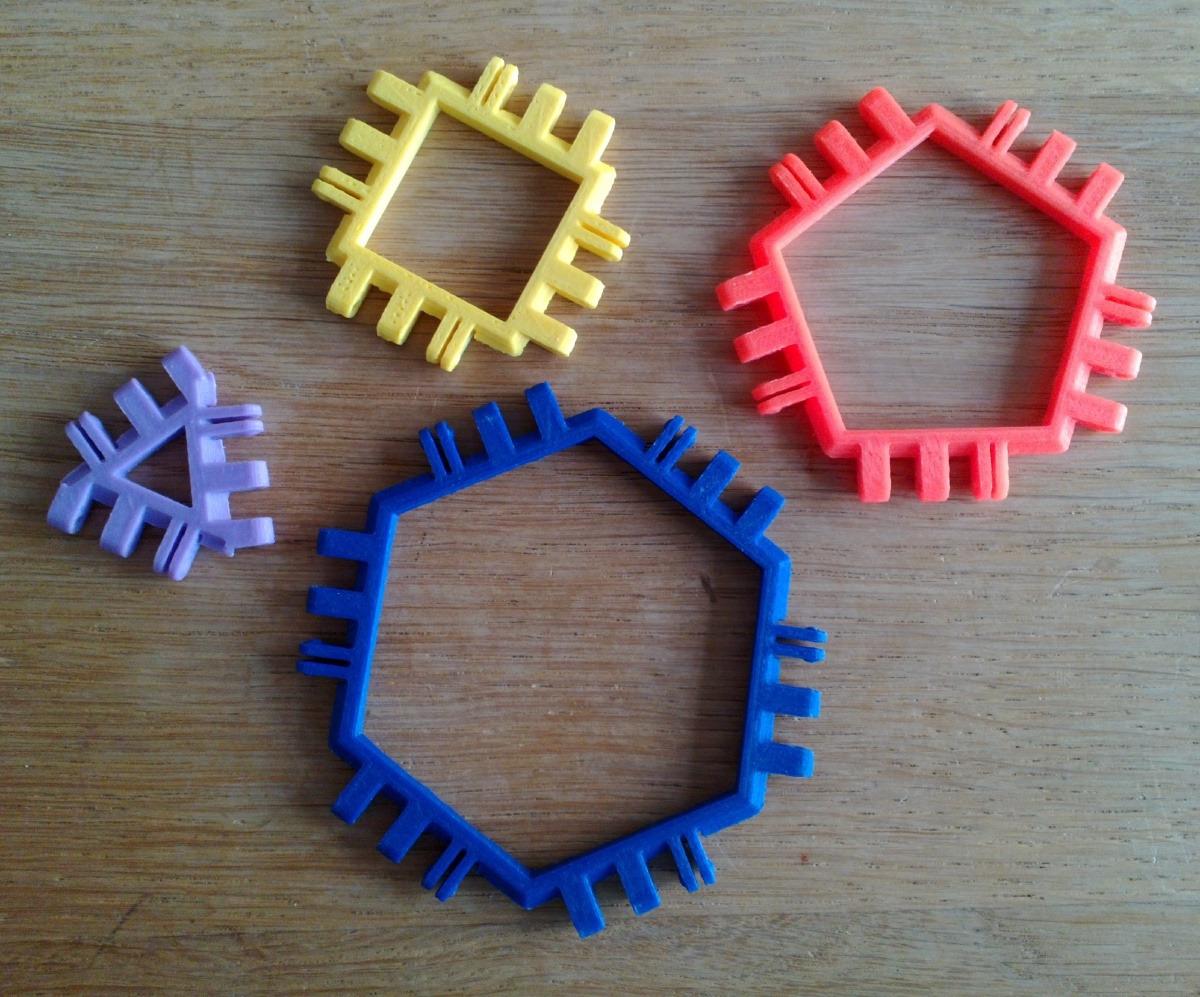The regular n-gon
On this page we will state a few very basic properties of a regular polygon with $n$ sides. We assume that each side is of length $a$. The next figure shows a typical example, in this case a heptagon, a seven-sided regular polygon.
The blue circle is called the circumcircle of radius $r_u$, passing through all the vertices. In analogy, there is a unique incircle of radius $r_i$ touching all sides from within, here drawn in red. The central angle equals:
$$ \phi = \frac{2 \pi}{n} $$
where as the peripheral interior angle is:
$$ \psi = 2 \frac{\pi - \phi}{2} = \pi - \frac{2 \pi}{n} = \frac{(n - 2)\pi}{n}. $$
Now we concentrate on one single triangle from the polygon as shown in the next figure.
The radius $r_u$ of the circumcircle can be found by trigonometry. We start with the equation:
$$ r_u \sin\left(\frac{\phi}{2}\right) = \frac{a}{2} $$
from where we get:
$$ r_u = \frac{a}{2 \sin\left(\frac{\phi}{2}\right)} = \frac{a}{2 \sin\left(\frac{\pi}{n}\right)}. $$
For the incircle, we can either use the Pythagorean theorem:
$$ r_i = \sqrt{r_u^2 - \left(\frac{a}{2}\right)^2} $$
or apply trigonometry again:
$$ r_i = r_u \cos\left(\frac{\phi}{2}\right) = \frac{a \cos\left(\frac{\phi}{2}\right)}{2 \sin\left(\frac{\phi}{2}\right)} = \frac{a}{2} \cot\left(\frac{\pi}{n}\right). $$
Finally, the area $A(n, a)$ of the regular n-gon can be computed as $n$ times the area of a single segment triangle:
$$ A(n, a) = n \frac{a \, r_i}{2} = \frac{n \, a^2}{4 \tan\left(\frac{\pi}{n}\right)}. $$
The regular fillygons are real-world approximations to the regular $n$-sided polygons described above.

Literature
Many more properties can be found in the Wikipedia article:
